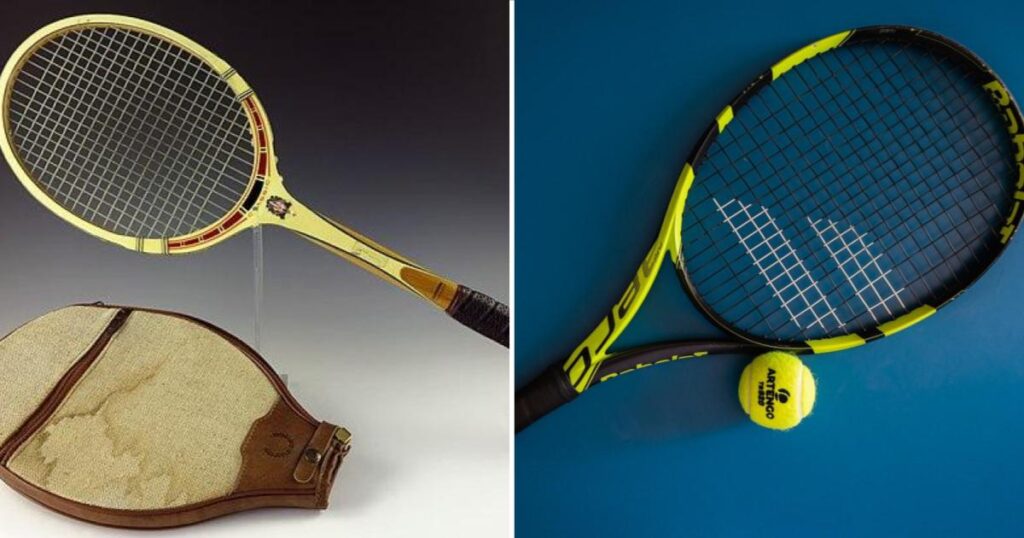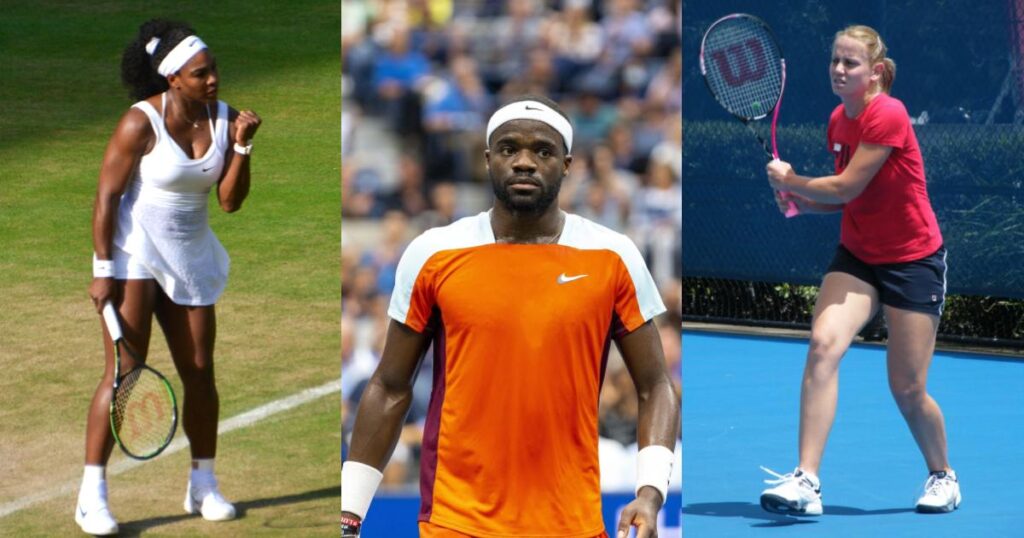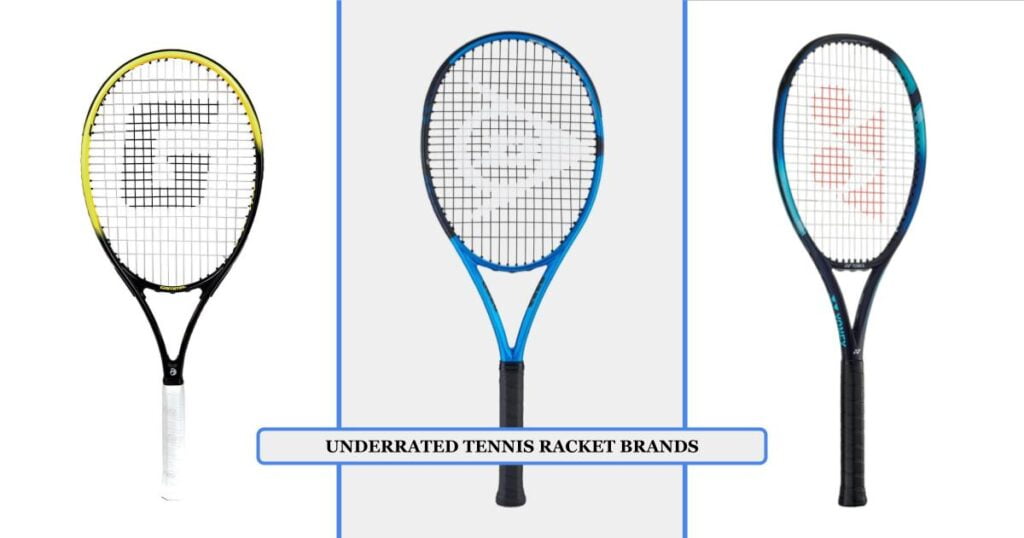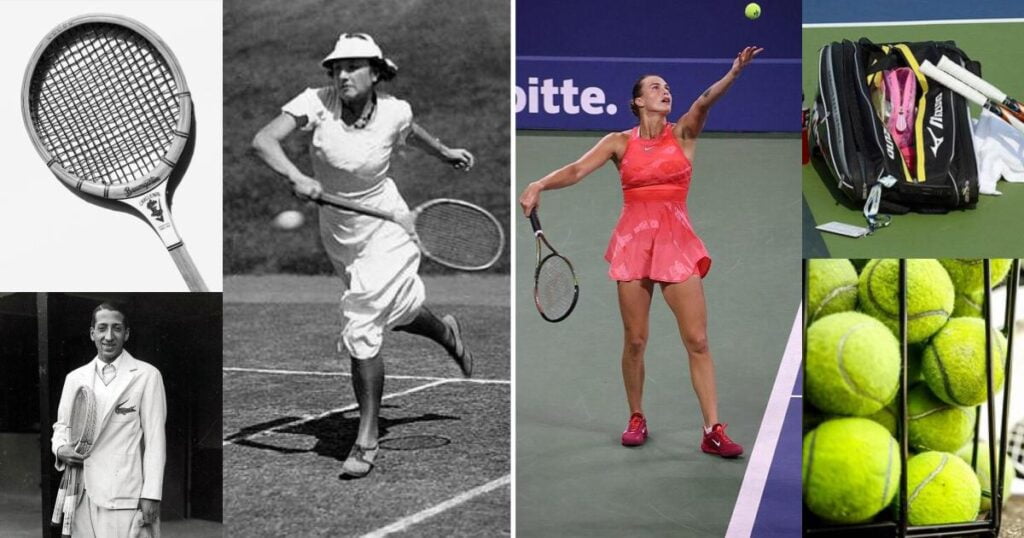Evolution of tennis rackets: from classic to modern
Here are some noteworthy instances of how the tennis racket has evolved over time:
- The last time a wooden tennis racket was used at Wimbledon was in 1987.
- In the year 1874, inventor and British army officer Walter C. Wingfield created the first wooden tennis racket.
- French tennis player René Lacoste was the first to patent a steel tennis racket.
- The first graphite tennis racket was launched in 1979. It was patented by Taiwanese racket maker Kunnan Lo.
- Carbon fiber rackets were first used by tennis players in the 1980s, but it took over a decade for them to gain popularity among tennis players.
- Although the origin of tennis is unknown, it gained popularity in France in the 11th century.
- In the days before rackets were invented, French monks used to hit the ball with the palm of their hands.
- In the 16th century, people started using tennis rackets to play the game.
A brief overview of comparison between classic tennis rackets and modern tennis rackets:
Please note the information given in the following table is comparative in nature and subject to individual preferences.
| Classic Tennis Racket | Modern Tennis Racket | |
| Material | Wood | Graphite, Aluminum, Composite materials |
| Customization | More customizable | Moderately customizable |
| Size | Smaller head size. Smaller sweet spot | Larger head size Larger sweet spot |
| Dimensions | 9 Inch wide*, 27 Inch long | 10 Inch wide*, 27 Inch long |
| Power | Less power Slower swing | More power Faster swing |
| Weight | Heavier in weight W: 12 to 14 ounces* | Lighter in weight W: 8 to 12 ounces* |
| Head size | Small | Large |
| Vibration damping | No | Yes |
| Vibration | High | Low |
| Swing speed | Slower | Faster |
| Durability | Less durable | More durable |
| Lifespan | Shorter | Longer |
| Stiffness | More stiffer | Less stiffer |
| String material | Natural gut, synthetic gut | Synthetic gut, Polyester |
| String tension | Lower | Higher |
| Swing weight | Heavier | Lighter |
1. Materials

The last player to win a Grand Slam with a wooden racket was French tennis player Yannick Noah in 1983. Classic tennis rackets are typically made of wood, while modern rackets are made of several metals and non-metals, including graphite, aluminum, and composite materials. Composite materials consist of carbon fiber, titanium alloys, and synthetics.
The materials used to make new tennis rackets are lighter than wood, making them easier to control. The use of composite materials also allows new rackets to have larger head sizes than classic ones. This gives players more control when hitting the ball. The reason why new tennis rackets have larger head sizes than wooden ones is because they are lighter. The weight of new rackets is less than classic rackets, so manufacturers can make the head size larger without making the racket too heavy.
Compared to modern rackets, classic rackets are more customizable. Old rackets can be customized for string pattern and tension, grip, balance, and length. However, customization of strings and tension, grip, and balance is limited for new rackets due to their composite frames.
2. Size and shape

In 1978, Pam Shriver used the Prince racket, known for its oversized frame and larger sweet spot, to reach the US Open final. The racket gained popularity during the same time.
Old tennis rackets had smaller head sizes compared to modern ones. The shape of tennis rackets has also changed significantly over time, but the difference is not major as it has always remained a circular shape for both types of rackets.
However, classic tennis rackets had a more rounded head shape, while modern rackets have a more oval shape. The sweet spot, an area on the racket that provides the most power and control, is larger in newer rackets compared to older ones.
Although most rackets, including wooden ones, are still 27 inches long, the width has changed from 9 inches in old rackets to 10 inches in modern rackets and, in some cases, 12 inches.
3. Power

Did you know that during a US Open match, American tennis player James Blake hit a 125 mph forehand? We’re not sure if that’s a record, but that number is definitely impressive. Very few players can generate that kind of power on a forehand.
When we talk about the power aspect of a tennis racket, we’re essentially talking about its ability to generate pace on shots. Compared to old tennis rackets, which were made of wood, modern tennis rackets are lighter in weight because they’re made from materials like graphite and carbon fiber. This lighter weight allows tennis players to swing the rackets faster, which generates more power.
Another aspect that contributes to the power of a tennis racket is the frame and head size. The frames of modern tennis rackets are stiffer than the old ones. This stiffness allows the racket to bend to a lesser degree, which transfers more energy to the ball. The head sizes of the rackets also have significant differences. Modern rackets have heads that are larger in size. As discussed earlier, a larger head size results in a larger sweet spot.
4. Control

Roger Federer is the name that comes to mind when we talk about control and accuracy when hitting the ball. He has rarely lost his form or shape, no matter how difficult the situation is.
The control of a tennis racket is its ability to allow a tennis player to hit the ball with precision and accuracy. It depends on several factors, such as weight, string pattern, head size, and materials used.
There is a significant difference in the weights of modern and classic rackets. New rackets come with string vibration dampeners, which were not included in older models. When a ball hits the racket’s string, it vibrates. This vibration then transfers to the player’s arm, causing discomfort that depends on the pace of the ball. String vibration dampeners reduce the amount of vibration to a greater extent. They are small devices made from materials that absorb vibrations, such as rubber or similar materials. Vibration dampeners are normally attached to the frame of the racket or placed in the neck of the racket.
Overall, modern-day rackets provide better control than wooden rackets. In this era of technology, we will certainly see more improvements and innovations in regards to tennis rackets.
5. Feel
The feel of a tennis racket is subjective and will differ from person to person. For example, a player who has played mostly with wooden tennis rackets might not find modern day rackets comfortable to hold, as they are accustomed to the older ones. Similarly, someone who plays with modern rackets might not find wooden rackets comfortable to hold. However, most people in today’s day and age find that modern tennis rackets feel more solid to grip and comfortable to swing.
Here, we will not discuss whether the racket feels comfortable or not, but rather the elements that contribute to the feel of the racket and how they have evolved. When we talk about the feel of a racket, we are essentially referring to its grip and handle. So, let’s talk about those a bit.
The handle of wooden rackets was made of wood, or more specifically, a single piece of wood that was shaped to fit the player’s hand. The grip of wooden rackets was made of leather, and a tape was used to keep it in place. Today, the grips of tennis rackets are made of synthetic materials. Leather grips are less soft and shock-absorbing than the composite materials used to make handle grips today. As a result, the hands of a player will typically get tired more quickly when using a leather grip. However, some tennis players still prefer a leather grip for the handle.
6. Durability

The durability of a tennis racket can be simply measured by its ability to withstand wear and tear. New tennis rackets are the clear winner in this category, as they are made from materials such as graphite, aluminum, and other composites. These materials are more durable than wood, which is the traditional material used for tennis rackets. As a result, new tennis rackets will last longer than wooden rackets under normal use.
The durability of a tennis racket can also be affected by the player’s playing style. A player who uses a lot of power to hit the ball will put more stress on the racket, which will shorten its lifespan. Conversely, a player who uses less power will put less stress on the racket, which will extend its lifespan.
7. Racket String
New tennis rackets are strung with synthetic gut, such as nylon. Old tennis racket strings were usually made from the guts of animals. The cost of making synthetic gut is lower than the cost of purchasing natural gut. One key advantage of strings made with synthetic gut over natural ones is their gauge. The gauge of a string is its diameter. Gauges of synthetic strings are thinner than strings made with natural gut. This is because synthetic materials can be made into thinner strings than natural materials. Due to the use of synthetic materials, the durability of tennis racket strings has increased. Natural gut strings were expensive and, compared to new rackets, they were prone to break after extensive use.
8. Overall Performance
The competitive analysis above clearly shows that modern rackets have a definite competitive advantage over classic rackets in terms of overall performance. Modern rackets are lighter in weight due to their material components, and they have a head-heavy balance and a synthetic grip. These factors all make them easier to swing, and the larger head size of modern rackets has resulted in more power.
However, the overall performance of a racket also depends on the playing style of the player. Simply using a modern or more expensive racket does not guarantee success. And using a classic tennis racket does not mean that a player will perform poorly. Ultimately, the performance depends on the player and how they use the racket and its strengths to their advantage.
Tennis is a unique individual sport in which an athlete’s performance depends not only on their skills but also on the different attributes of the racket, which contribute as a deciding factor in shaping the outcome of the match. Tennis rackets are an integral part of the sport of tennis, and their evolution over the years highlights this. There are few other pieces of sports equipment that have undergone such immense changes in terms of design and performance. In today’s technological age, we can expect to see continued evolution of the tennis racket.
Also see:
Underrated Tennis Racket Brands That Offer Great Value
Evolution of Tennis Equipment Over A Period of Time
Tags: Tennis Insights






